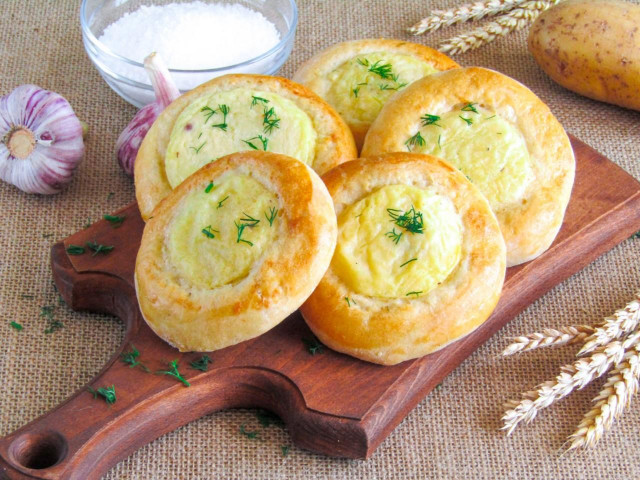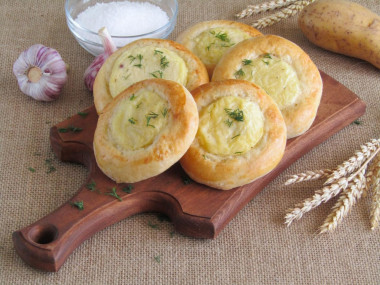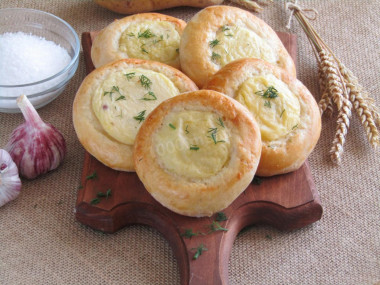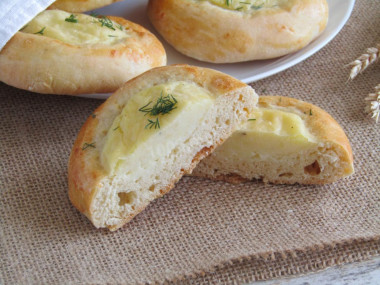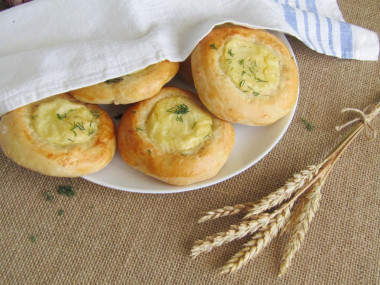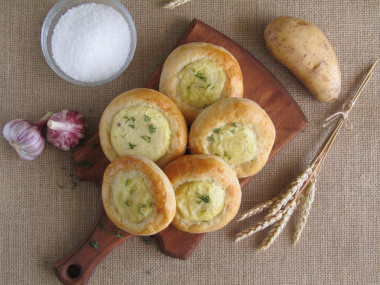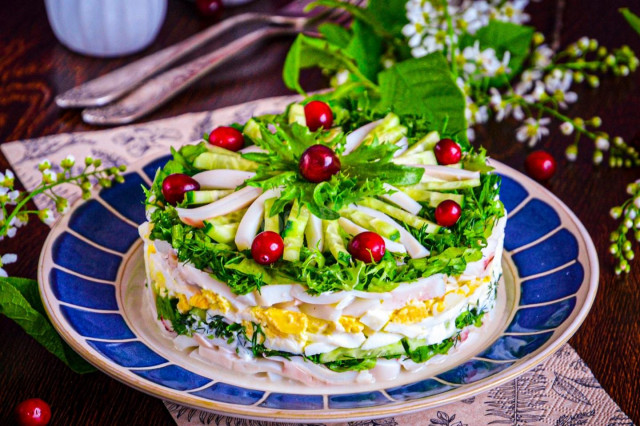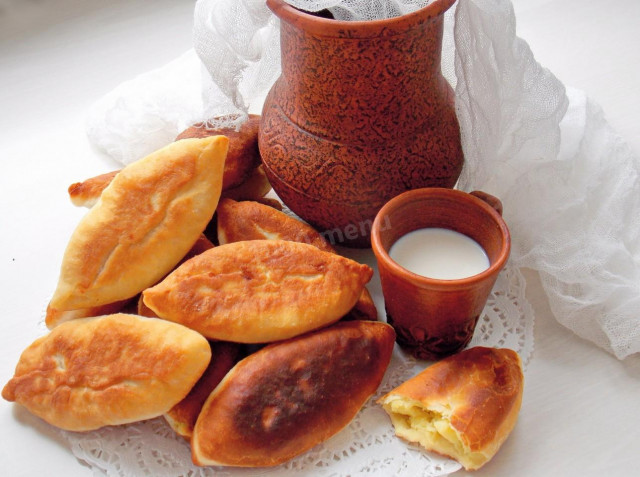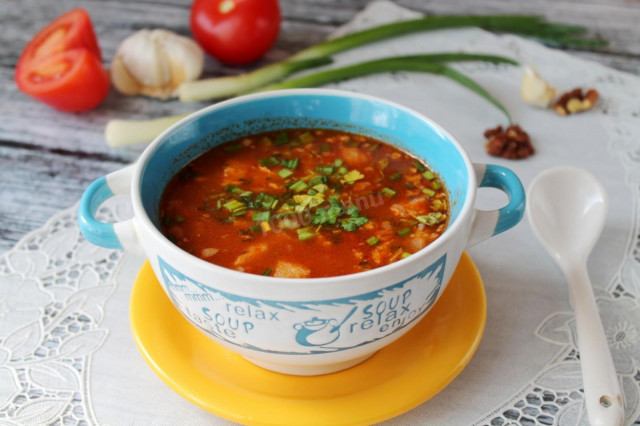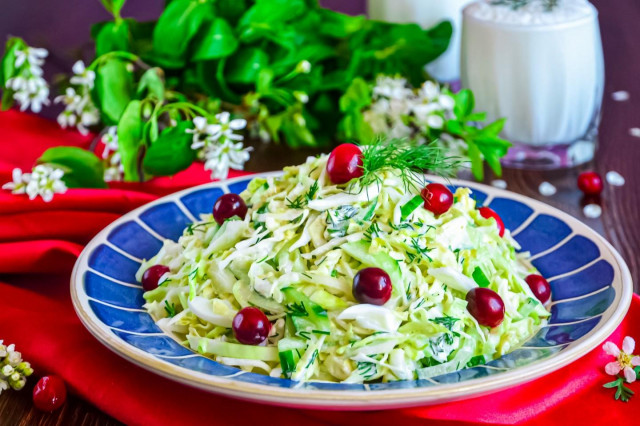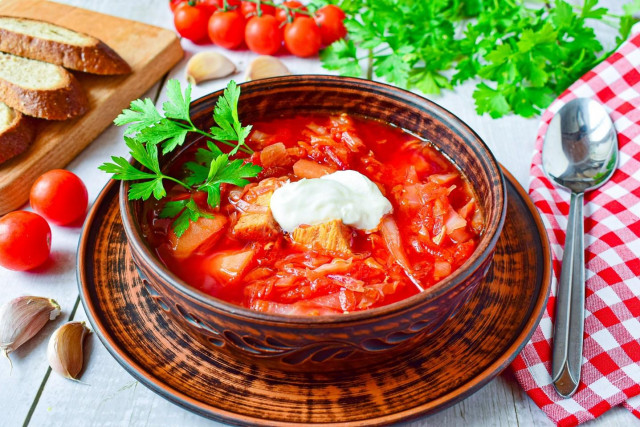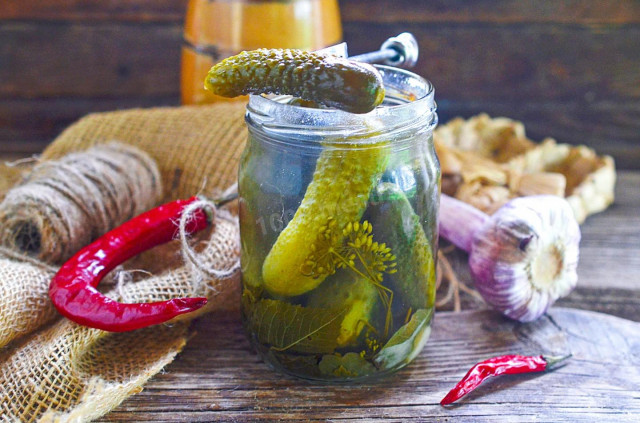Composition / ingredients
Step-by-step cooking
Step 1:
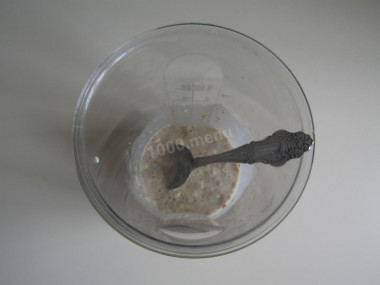
First prepare the sourdough. To do this, heat 100 ml of milk to a warm state, the milk should be exactly warm, not hot, this is important, otherwise the yeast will die and the baking will not rise. Add a tablespoon of sugar and a tablespoon of flour to the warm milk, mix, add yeast and put in a warm place for 15 minutes.
Step 2:
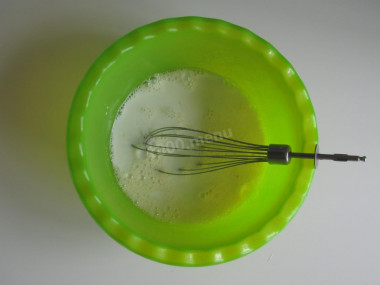
Break the egg into a bowl, add a tablespoon of sugar, beat a little with a whisk, add the remaining 100 ml of milk, mix, all ingredients should be at room temperature.
Step 3:
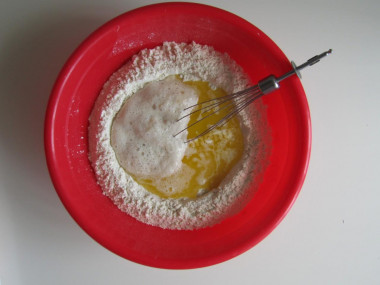
Sift the flour into a bowl (sifting will enrich the flour with oxygen and the baking will turn out more magnificent), make a recess in it, pour the egg-milk mixture into it, the sourdough that has come up and the butter melted and cooled to room temperature. Stir with a whisk, starting to gradually grab the flour from the edges, knead the dough, cover it with a towel and send it to a warm place for an hour.
Step 4:
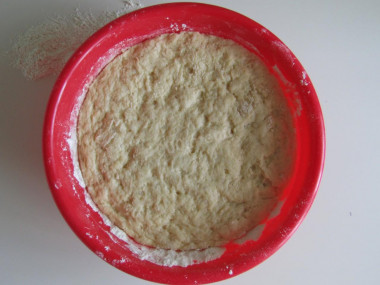
After an hour, the dough should increase in size.
Step 5:
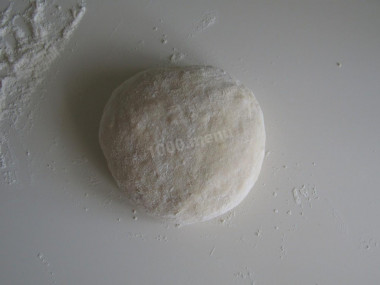
Sprinkle the tabletop with flour, put the dough that came up on it, knead it.
Step 6:
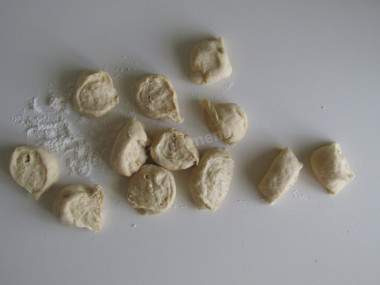
Divide the dough into 12 parts.
Step 7:
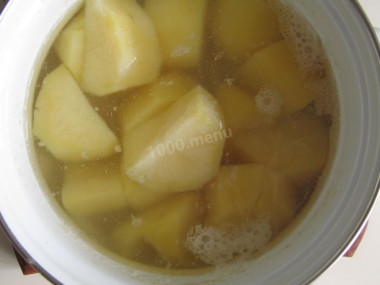
For the filling, boil the potatoes until tender.
Step 8:
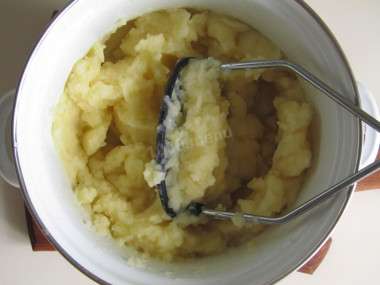
Mash it and add salt, butter, sour cream, mix.
Step 9:
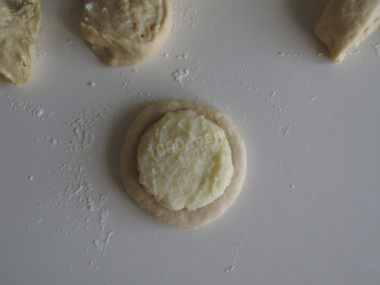
Take one part of the dough, roll it into a flat cake, use a glass to make a small recess and put the filling in it.
Step 10:
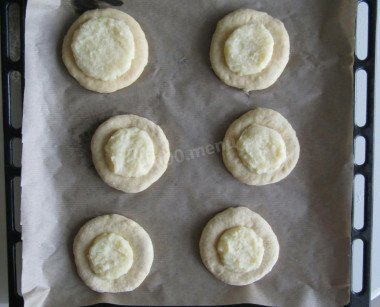
In this way, form 12 stitches, put them on a baking sheet covered with parchment paper at a distance from each other, as they will increase in size during the baking process. Put it on proofing in a warm place.
Step 11:
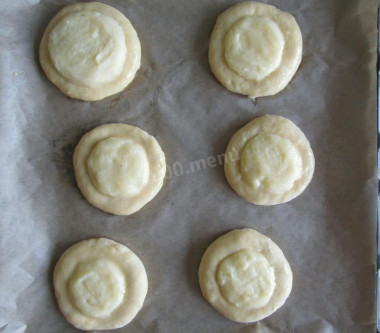
Then break the egg, separate the yolk, shake it a little and lubricate the stitches so that they turn ruddy. Bake in a preheated 180 degree oven for about 20 minutes until browning. It may take a little more or less time to navigate by your oven. I baked for 20 minutes. Shanezhki are ready, bon appetit!
Be prepared for the fact that flour may need more or less than indicated in the recipe. Focus not on the amount of flour, but on the desired consistency of the dough. To avoid mistakes, read about flour and its properties!
Keep in mind that everyone's ovens are different. The temperature and cooking time may differ from those specified in the recipe. To make any baked dish successful, use useful information about the features of ovens !
Dry yeast can be replaced with fresh pressed yeast, based on the proportion of 1:3. That is, for 1 gram of dry yeast required by the recipe, you need to take 3 grams of fresh.
Caloric content of the products possible in the composition of the dish
- Ripe potatoes - 80 kcal/100g
- Baked potatoes - 70 kcal/100g
- Mashed potatoes - 380 kcal/100g
- Boiled potatoes - 82 kcal/100g
- Potatoes in uniform - 74 kcal/100g
- Fried potatoes - 192 kcal/100g
- Whole cow's milk - 68 kcal/100g
- Milk 3.5% fat content - 64 kcal/100g
- Milk 3.2% fat content - 60 kcal/100g
- Milk 1.5% fat content - 47 kcal/100g
- Concentrated milk 7.5% fat content - 140 kcal/100g
- Milk 2.5% fat content - 54 kcal/100g
- Sour cream with 30% fat content - 340 kcal/100g
- Sour cream of 25% fat content - 284 kcal/100g
- Sour cream with 20% fat content - 210 kcal/100g
- Sour cream of 10% fat content - 115 kcal/100g
- Sour cream - 210 kcal/100g
- Chicken egg - 157 kcal/100g
- Egg white - 45 kcal/100g
- Egg powder - 542 kcal/100g
- Egg yolk - 352 kcal/100g
- Ostrich egg - 118 kcal/100g
- Whole durum wheat flour fortified - 333 kcal/100g
- Whole durum wheat flour, universal - 364 kcal/100g
- Flour krupchatka - 348 kcal/100g
- Flour - 325 kcal/100g
- Granulated sugar - 398 kcal/100g
- Sugar - 398 kcal/100g
- Butter 82% - 734 kcal/100g
- Amateur unsalted butter - 709 kcal/100g
- Unsalted peasant butter - 661 kcal/100g
- Peasant salted butter - 652 kcal/100g
- Melted butter - 869 kcal/100g
- Salt - 0 kcal/100g
- Dry yeast - 410 kcal/100g

